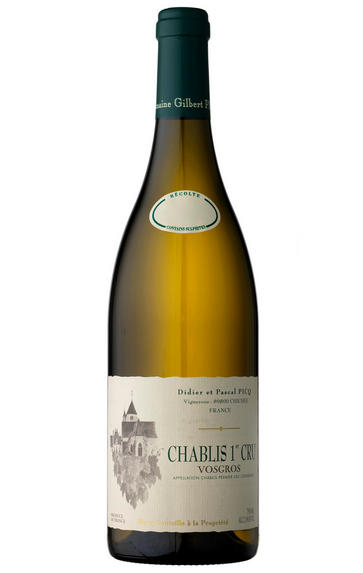
2022 Chablis, Vosgros, 1er Cru, Didier & Pascal Picq, Burgundy
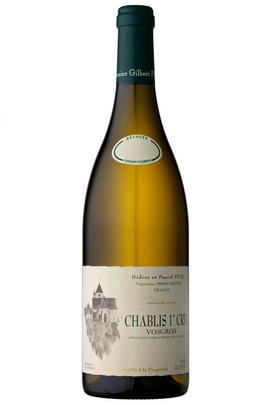
Critics reviews
Bright pale luminous yellow, one of the fleshier wines this year before refining to a precise aquiline finish. Just a hint of bitterness behind. Sort of a Vauclaire plus. This could very well grow from here.
Drink 2027 - 2034
Jasper Morris MW, Inside Burgundy (December 2022)
The 2022 Chablis Vosgros 1er Cru takes a little more time to open on the nose than Picq’s other cuvées but eventually reveals eucalyptus-tinged citrus fruit flanked by wet stone aromas. The palate is very well-balanced with a fine bead of acidity, very saline but with a countervailing, almost honeyed element keeping this on its toes. This is a brilliant follow-up to the 2021.
Well, the first good news is that winemaker Didier Picq was there waiting for me at his winery in Chichée – he forgot our appointment on the last couple of occasions. This is a go-to name for those seeking steely; you could almost describe them as “mean” Chablis wines that see no wood. “I picked from September 1 over ten days,” he tells me as we broach his 2022s. “The vines compensated for the small yields in the previous year. I think it’s a great vintage.” Picq’s wines, like others, do benefit from bottle age and require time to blossom in the glass, which is why they so often fare less well in blind tastings.
Drink 2026 - 2040
Neal Martin, Vinous.com (September 2023)
About this WINE
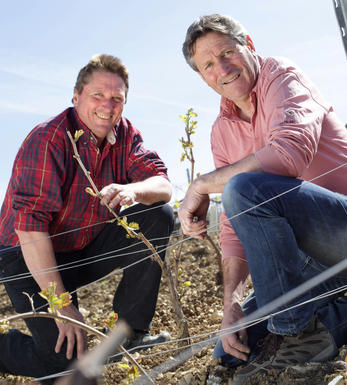
Didier & Pascal Picq
Brothers Didier and Pascal Picq head up this domaine, based in Chichée, just south of the town of Chablis. Didier is in charge of winemaking, while his brother Pascal looks after the vineyards. Their father Gilbert retired in 1976, but the domaine still proudly bears his name.
About the domaine
The Picq family have farmed the land around the hamlet of Chichée for generations, with the single ambition of transmitting their distinctive terroir faithfully. For the two brothers – who have been at the helm for over 40 years – this has meant respecting the soil, controlling yields, preserving older vines, using natural yeast, vinifying without oak and applying only light filtration.
The domaine produces up to six different cuvées each year, all of which are fermented and aged in stainless steel; no oak is used. The result is opulent, generously flavoured Chablis, with notes of honey, citrus pith and white pepper. The exception is the Premier Cru Vaucoupin, which has a steely, mineral concentration requiring some age to bring out its full potential.
In the vineyard
As well as its small holdings in two premiers crus, the domaine has some old vines in well-sited village parcels around the hamlet of Chichée. The range of soils include pure Kimmeridgian limestone, and a blend of limestone and marl each of which imparts its own character to the wine. To control yields, they prune severely in winter and de-bud twice in spring.
In the winery
The domaine produces a number of cuvées: a Chablis blended from 12 different plots, a vielle vigne bottling from a tiny plot of 60-to-70-year-old vines, and two premier cru bottlings, Vosgros and Vaucoupin.
All wines are fermented with indigenous yeasts, and only stainless steel is used for fermentation and aging, even for the two premiers crus. All wines undergo full malolactic fermentation; no fining is applied, and only a light filtration before late bottling.
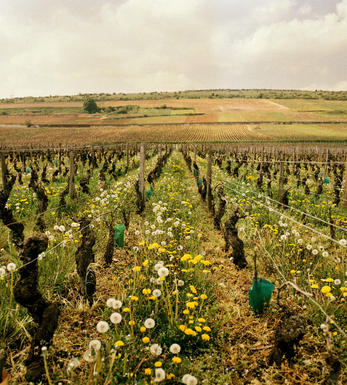
Chablis Premier Cru
Chablis Premiers Crus are stylish, minerally wines which, typically, are less intense than the Grand Crus but finer and longer-lasting than basic Chablis. They are highly underrated with the better examples outclassing many a good village white Burgundy.
The vineyards cover 750 hectares, scattered across 15 communes on isolated slopes with good exposure. There are 17 principal Premiers Crus but in total 79 vineyards are eligible, with most of the lesser-known ones using a more familiar umbrella name on their label. The best flank the Grands Crus on the north bank of the River Serein, like Montée de Tonnerre (probably the best of all), Fourchaume and Mont de Milieu.
Those just south of Chablis, like Vaillons, Montmains (especially Les Forêts) and Côte de Léchet are also good. With the vineyard area having doubled since the 1970s, quality varies enormously so, as ever, the producer is key.
Styles also vary, with some maturing and fermenting in stainless steel for a purer, more minerally style, while others age and sometimes even ferment their wines in oak for extra complexity. The best examples reach their apogee at eight to 10 years, but are normally enjoyed long before then.
Recommended producers: Jean-Claude Bessin, Billaud-Simon, Séguinot-Bordet, J.-P. & Benoit Droin, Duplessis, Defaix
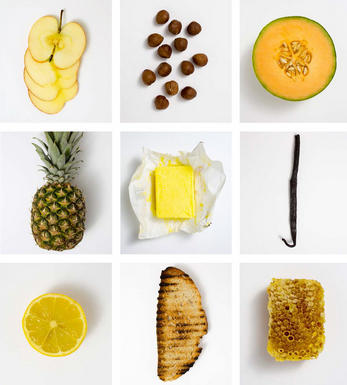
Chardonnay
Chardonnay is often seen as the king of white wine grapes and one of the most widely planted in the world It is suited to a wide variety of soils, though it excels in soils with a high limestone content as found in Champagne, Chablis, and the Côte D`Or.
Burgundy is Chardonnay's spiritual home and the best White Burgundies are dry, rich, honeyed wines with marvellous poise, elegance and balance. They are unquestionably the finest dry white wines in the world. Chardonnay plays a crucial role in the Champagne blend, providing structure and finesse, and is the sole grape in Blanc de Blancs.
It is quantitatively important in California and Australia, is widely planted in Chile and South Africa, and is the second most widely planted grape in New Zealand. In warm climates Chardonnay has a tendency to develop very high sugar levels during the final stages of ripening and this can occur at the expense of acidity. Late picking is a common problem and can result in blowsy and flabby wines that lack structure and definition.
Recently in the New World, we have seen a move towards more elegant, better- balanced and less oak-driven Chardonnays, and this is to be welcomed.


Buying options
Add to wishlist
Description
The nose here has a grassy, petrol character that is reminiscent of fine Riesling. The firm thread of lime acidity might take one in that direction, too, but the oyster shell notes that come at the very end are pure Chablis.
Drink 2027 - 2040
Berry Bros. & Rudd
wine at a glance
Delivery and quality guarantee